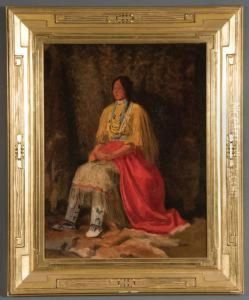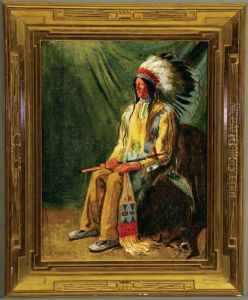Frederick Weygold Paintings
Frederick Weygold was an American artist, photographer, and ethnographer, best known for his work documenting the lives and cultures of Native American peoples, particularly the Plains Indians. Born in Louisville, Kentucky, in 1870, Weygold had a profound interest in Indigenous cultures from an early age, an interest that would shape his career and contributions to ethnography and art.
Weygold's journey into the world of Native American studies began in earnest after he moved to Germany for his education. It was there that he became deeply involved in ethnographic studies, eventually focusing on Native American societies. His academic work in Germany laid the groundwork for his life's mission: to accurately document and preserve the cultures of Native American peoples, which he felt were under threat from the rapid pace of American expansion and modernization.
Returning to the United States, Weygold embarked on several field trips to the Great Plains, where he lived among various Native American tribes. During these trips, he collected artifacts, took photographs, and made detailed illustrations and notes on tribal customs, ceremonies, and daily life. His work was not only artistic but also scientific, contributing valuable information to the fields of anthropology and ethnography.
Weygold's artistic talents were evident in his detailed and sensitive portrayal of Native American life. His drawings and photographs are considered some of the most accurate and insightful records of Plains Indian cultures during the early 20th century. He paid great attention to the intricacies of clothing, weaponry, and ceremonial objects, which he depicted with precision and care. Weygold also made significant contributions to the understanding of Native American sign language and was among the first to record it systematically.
Throughout his life, Frederick Weygold remained committed to the respectful and accurate representation of Native American cultures. His work has been influential in both the art world and among scholars of Native American studies. He died in 1941, leaving behind a legacy of dedication to the preservation of Indigenous cultures through art and scholarship. His collections and photographs continue to be valuable resources for researchers and serve as a testament to his life's work.

